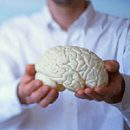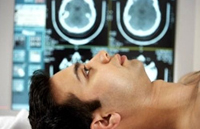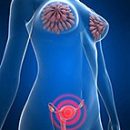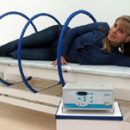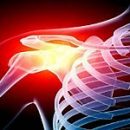Hypoglycemic Coma is a complication of diabetes and benign pancreas tumor. The reason for the development of the comatose state is the insufficient concentration in the blood of glucose, which leads to the energy and oxygen starvation of the brain.
Content
Coma is the unconscious state characterized by the complete absence of reactions to external stimuli, the absence of reflexes and disorder of vital functions. Sometimes coma is the final stage of various diseases. Coma is always an indication for intensive therapy, as the delay with the beginning of treatment as a result of late diagnostics may result in death.
The concept of hypoglycemic coma
Hypoglycemic Coma is one of the complications of diabetes or manifestation of insuls. The cause of the development of a hyperglycemic coma is a decrease in blood glucose levels. Normally, the content of blood glucose is 4.4-6.6 mmol / l. As you know, glucose serves as the main energy material that the brain uses for its work. Half-galcehemic symptoms are developing with its own glycogen's glycogen stocks and with a decrease in blood glucose levels, hypoglycemic symptoms develop. In patients with diabetes mellitus, the hypoglycemic state may occur at a relatively high content of glucose.
Basic symptoms of coma
 Symptoms of hypoglycemia (reduced blood content of glucose) is due to violations of the activity of the central nervous system, since with a decrease in glucose admission to the brain cells, the oxygen is disappeared, as a result of which hypoxia (oxygen starvation) of the brain is developing. With a long period of coma in the crust of large hemispheres, irreversible destructive changes are developing. Most often hypoglycemia - a consequence of excessive insulin administration (especially prolonged action) with diabetes mellitus. It can also develop as a result of increasing the level of endogenous insulin - hyperinsulinism (insuls).
Symptoms of hypoglycemia (reduced blood content of glucose) is due to violations of the activity of the central nervous system, since with a decrease in glucose admission to the brain cells, the oxygen is disappeared, as a result of which hypoxia (oxygen starvation) of the brain is developing. With a long period of coma in the crust of large hemispheres, irreversible destructive changes are developing. Most often hypoglycemia - a consequence of excessive insulin administration (especially prolonged action) with diabetes mellitus. It can also develop as a result of increasing the level of endogenous insulin - hyperinsulinism (insuls).
Insulin therapy of patients with diabetes mellitus belongs to a very responsible method of treatment, because as a result of incorrect actions in a patient, a coma. The reasons for such a sharp change in the patient's state may be lack of meals, especially carbohydrate, immediately after injection and 2-3 hours after it, when blood glucose level is the lowest. In addition, hypoglycemia may develop as a result of an increased physical activity after the introduction of insulin, with an increased sensitivity of the patient to insulin as a result of transferred secondary infections, with a combination of diabetes mellitus with diseases of the gastrointestinal tract and liver (decrease in insulin enzyme activity) and the defeat of other innovation Secretion.
Hypoglycemic Coma may develop acutely and subacted. With a substrate, 4 phases are isolated. The first phase is characterized by the appearance of weakness, fatigue, a small decrease in blood pressure. In the second phase, symptoms of increasing adrenaline - the pallor of the skin, pouring cold sweat, can be tremor, heartbeat, frequent, arrhythmic pulse. There is a sense of hunger, anxiety. The third phase is characterized by signs of lesion of the central nervous system - symptoms resemble alcohol intoxication:
- Lubricant Speech
- Noncritical attitude to its state
- euphoria
- Hallucinations
- Diplopia (shots in the eyes)
- Midship (pupil expansion)
- A convulsions appear
With the deepening of hypoglycemia, convulsions occurring in convulsions of the epilepsy type appear. With deep coma pupils narrowed, the corneal reflex is missing, the hurry of the eyeballs is reduced. Surface breathing. Tachycardia (rapid heartbeat) is replaced by bradycardia (slow heartbeat). Skin covers pale, wet, cold, blood pressure reduced, all reflexes are reduced. Due to the lesion of the brain, death is possible. In acute flow, the patient immediately comats for a comatose state without preceding phases.
Primary hyperinsulinism is more common in the pancreatic adenoma - insulsome. Insuloma is a benign hormonal-active tumor producing a large amount of insulin. Honoglycemia attacks are characteristic of insuls - hypoglycemic crises. The attacks usually appear in the morning on an empty stomach, sometimes accompanied by loss of consciousness and epileptiform convulsions. Provocate attacks starvation and physical expenditures.
Hypoglycemia is also found in diseases such as neurosis, diancefal syndrome, abdominal tumors, Addison disease, myxedema and T. D. For a differential diagnosis of insuls - true hyperinsulinism from symptomatic - a sample is used with starvation, when the patient is prohibited within 18-24 hours, allowed to drink, only water. Usually easy physical exertion. In the presence of strokes, pronounced hypoglycemia is developing almost in all patients.
Treatment of hypoglycemic coma
As soon as the hypoglycemic coma is diagnosed, it is necessary to immediately introduce 40-50 ml of 40% glucose solution intravenously inkido. Usually already «on the needle» Consciousness comes to the patient. In case this does not happen, the introduction of glucose is repeated. If it is not possible to introduce glucose intravenously, it is injected subcutaneously or in the enema (100-200 ml of 5% solution). At the same time, 100 mg of caocarboxylase, 5 ml of a 5% solution of ascorbic acid intramuscularly or intravenously. In severe cases, 0.5-1 ml of 0.1% of adrenaline solution is introduced at deep coma. Symptomatic therapy includes the use of heart glycosides, Cordiamine, Mesaton with cardiovascular disability phenomena. In the treatment of stroke, the method of choice is the operational removal of the tumor.


